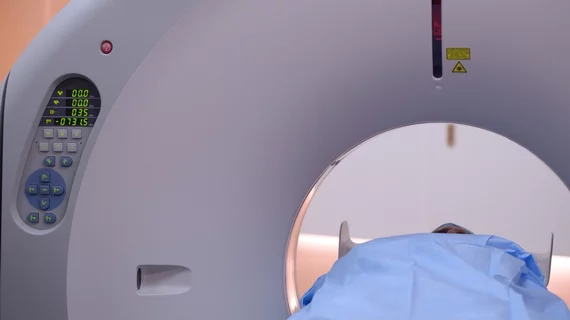In a medical landscape where the prognosis of pancreatic ductal adenocarcinoma (PDAC) remains poor, postoperative CT and FDG PET-CT imaging could help detect disease recurrence, researchers reported in the European Journal of Radiology this summer.
As of 2018, the best chance PDAC patients have at long-term survival is radical resection followed by adjuvant chemotherapy, lead author Lois A. Daamen, MD, and colleagues wrote in the journal. But even after resection, only 12 to 27 percent of patients manage to achieve five-year survival, and 80 percent see local or distant disease recurrence—stats the authors call “dismal.”
“Main reasons for this limited survival are the aggressive tumor biology of PDAC and the lack of effective systemic therapies,” Daamen, a PhD candidate at UMC Utrecht in the Netherlands, and co-authors wrote. “This combination results in a high recurrence rate, most of the time after a relatively short interval following resection.”
It doesn’t help that a set of universal guidelines for surveilling PDAC patients doesn’t exist, the authors said. Current recommendations are based loosely on low-level evidence and experts’ opinions, and national and international guidelines fail to agree on follow-up strategies.
Daamen and her team at UMC conducted a systematic search of the PubMed, EMBASE and Cochrane Library databases up to December of 2017 for studies reporting on the diagnostic value of imaging modalities for the detection of disease recurrence during follow-up after resection of PDAC. Diagnostic accuracy data were extracted or calculated for seven studies involving 333 patients.
All seven articles described test results of contrast-enhanced CT, Daamen et al. wrote, and five reported outcomes on the diagnostic accuracy of FDG PET-CT. Three articles described the results of FDG PET-CT combined with contrast-enhanced CT.
According to the research, the pooled estimates for CT sensitivity and specificity were 0.70 and 0.80, respectively. For FDG PET-CT they were 0.88 and 0.89, respectively, and for the combination of FDG PET-CT and contrast-enhanced CT they were 0.95 and 0.81, respectively.
“According to the current literature, postoperative contrast-enhanced CT imaging has a moderate diagnostic accuracy for detecting PDAC recurrence and could contribute to the early detection of recurrent disease,” the authors wrote. “Most of the studies performed on the diagnostic accuracy of FDG PET-CT for the detection of recurrent PDAC showed an additional value of FDG PET-CT, particularly in the case of suspected recurrence with equivocal or negative CT findings.”
Daamen and colleagues said more research needs to be done to further optimize surveillance strategies for post-op PDAC patients.
“Studies on the diagnostic performance of imaging modalities during follow-up and the consequences of early diagnosis of recurrent disease on survival and quality of life outcomes are justified,” they wrote.

